Chihuahuas are some of the smallest, cutest dogs on the planet! You’ve likely seen a few colors of Chihuahua, such as red or tan and black. But have you ever seen a pure black or white Chihuahua or one with a brindle coat?
Pure white, blue merle, blue, and black are some of the rarest Chihuahua coat colors. On the other hand, red, fawn, and cream are some of the most common.
In this article, we’ll go through 31 Chihuahua coat colors from rarest to most common.
Standard Chihuahua Colors
According to the AKC breed standard, all coat colors and combinations are acceptable in Chihuahuas, including “solid, marked, and splashed.”
Of course, some colors are more common than others–so let’s dive into all of the possible Chihuahua colors, from rarest to most common!
#1: White
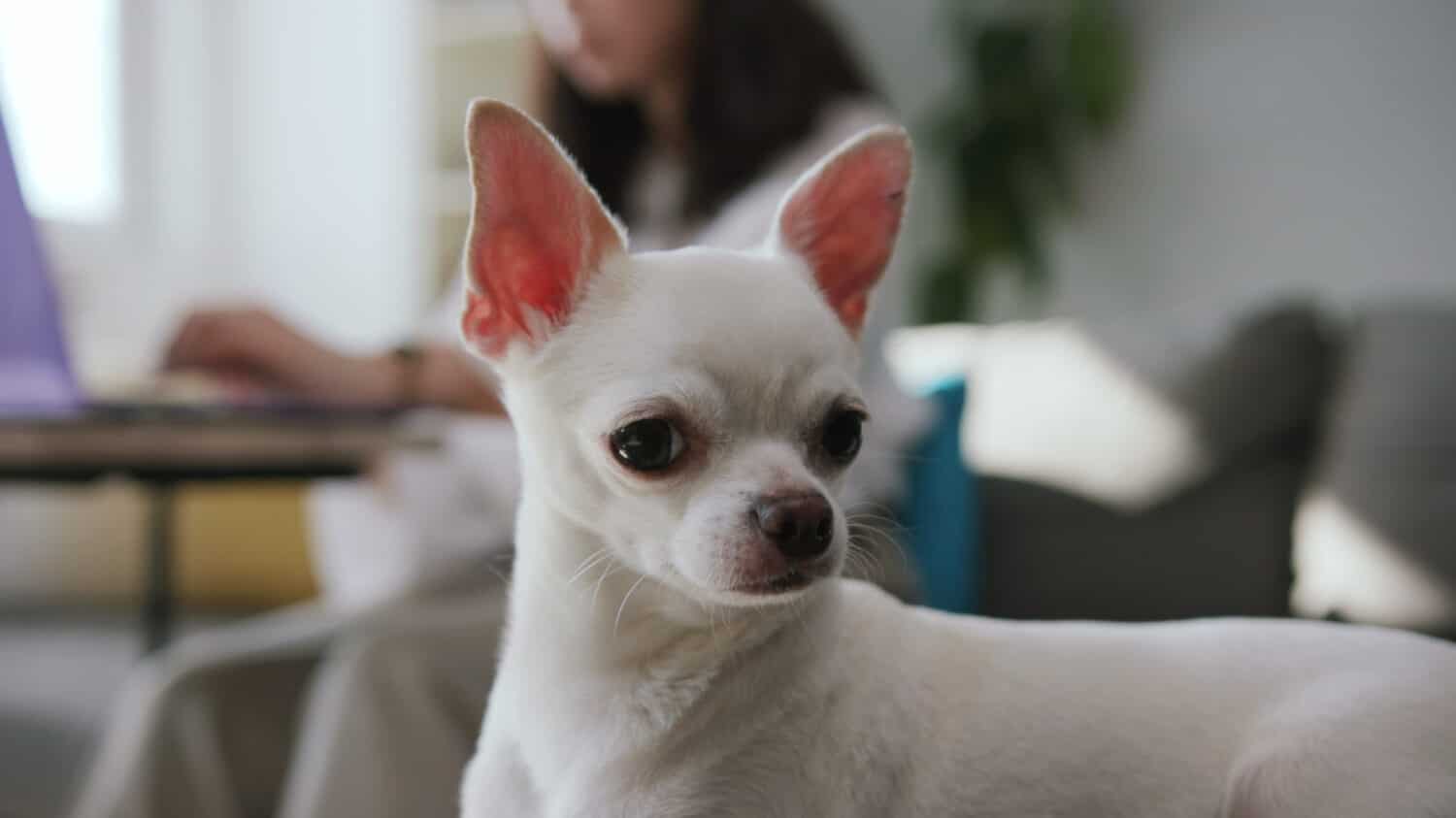
Pure white Chihuahuas are the rarest of all!
©Fractal Pictures/Shutterstock.com
Many Chihuahuas have white in their coats, but pure white Chis are the rarest of them all! Albino Chihuahuas, or those without any pigment, are the rarest–but they are also more likely to be blind, deaf, and prone to sunburn.
A reputable breeder will never purposefully breed albino puppies due to these increased health risks.
However, white Chihuahuas with pigment in their skin don’t have any more health problems than any other Chi.
#2: Blue Merle

Merle spots in blue merle Chihuahuas may be gray or black.
©Aneta Jungerova/Shutterstock.com
Blue merle Chihuahuas have light coats with darker blue or black markings. In dogs, the color blue isn’t a true, vibrant blue, but instead is gray.
Merle is a recessive gene, so it’s fairly rare to see in Chihuahuas.
Two dogs with merle genes should never be bred together, as this can result in double merle puppies. The double merle gene is associated with a variety of health issues.
#3: Blue
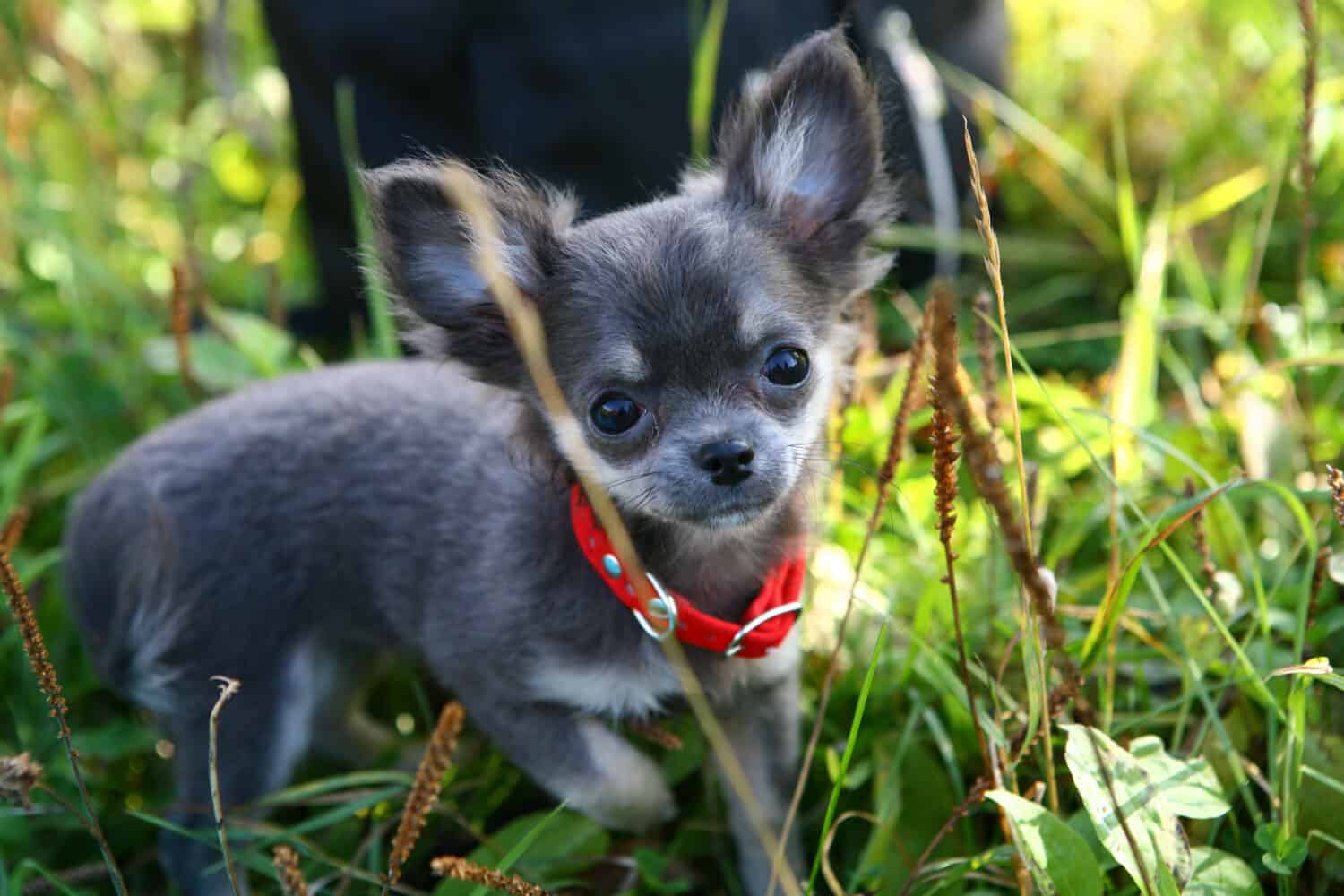
Chis with dark gray fur are called “blue.”
©Artem Bruk/Shutterstock.com
As we discussed above, blue in dogs isn’t a true blue. Instead, these are dogs with dilute black genes, resulting in gray fur.
Again, the genetics blue Chihuahuas have are recessive, increasing their rarity.
#4: Chocolate Blue

Chis with dilute brown fur are called “chocolate blue.”
©dezy/Shutterstock.com
Chocolate blue Chihuahuas are a dilute, or light, brown color. Their fur is lighter than you would see in chocolate Chis due to a recessive gene.
#5: Black
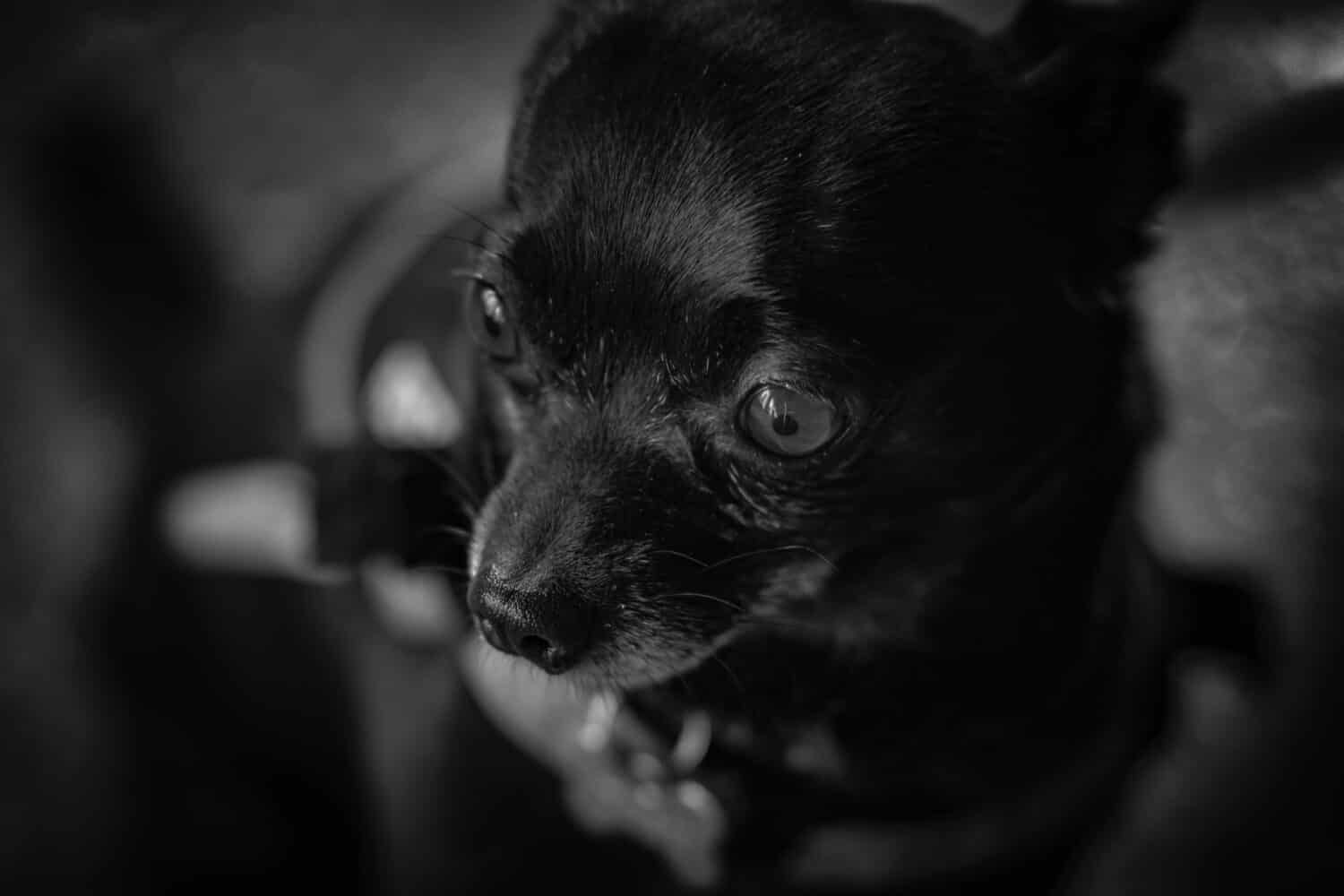
While black is a common coat color, pure black Chis are rare.
©22ele/Shutterstock.com
There are many black Chihuahuas out there, but most aren’t pure black. Instead, they have some amount of other fur colors–even if it’s just a small white spot or similar.
#6: Black and Silver
These Chis have black and gray coats and are seldom seen. They’ll likely cost more than other Chihuahua puppies due to their rarity.
#7: Blue Brindled Fawn

“Brindle” describes a striped coat.
©Jes Abeita/Shutterstock.com
These Chihuahuas have fawn base coats with a blue brindled, or striped, pattern. They may also have white in their coats.
#8: Chocolate-Brindled Fawn
Just like it sounds, chocolate-brindled fawn Chihuahuas are very similar to blue-brindled fawn Chis–just with chocolate (brown) stripes instead of blue.
#9: Fawn-Brindled Black
Another brindle pattern, fawn-brindled black Chihuahuas have black base coats with fawn stripes. Fawn is a medium tan color.
#10: Silver
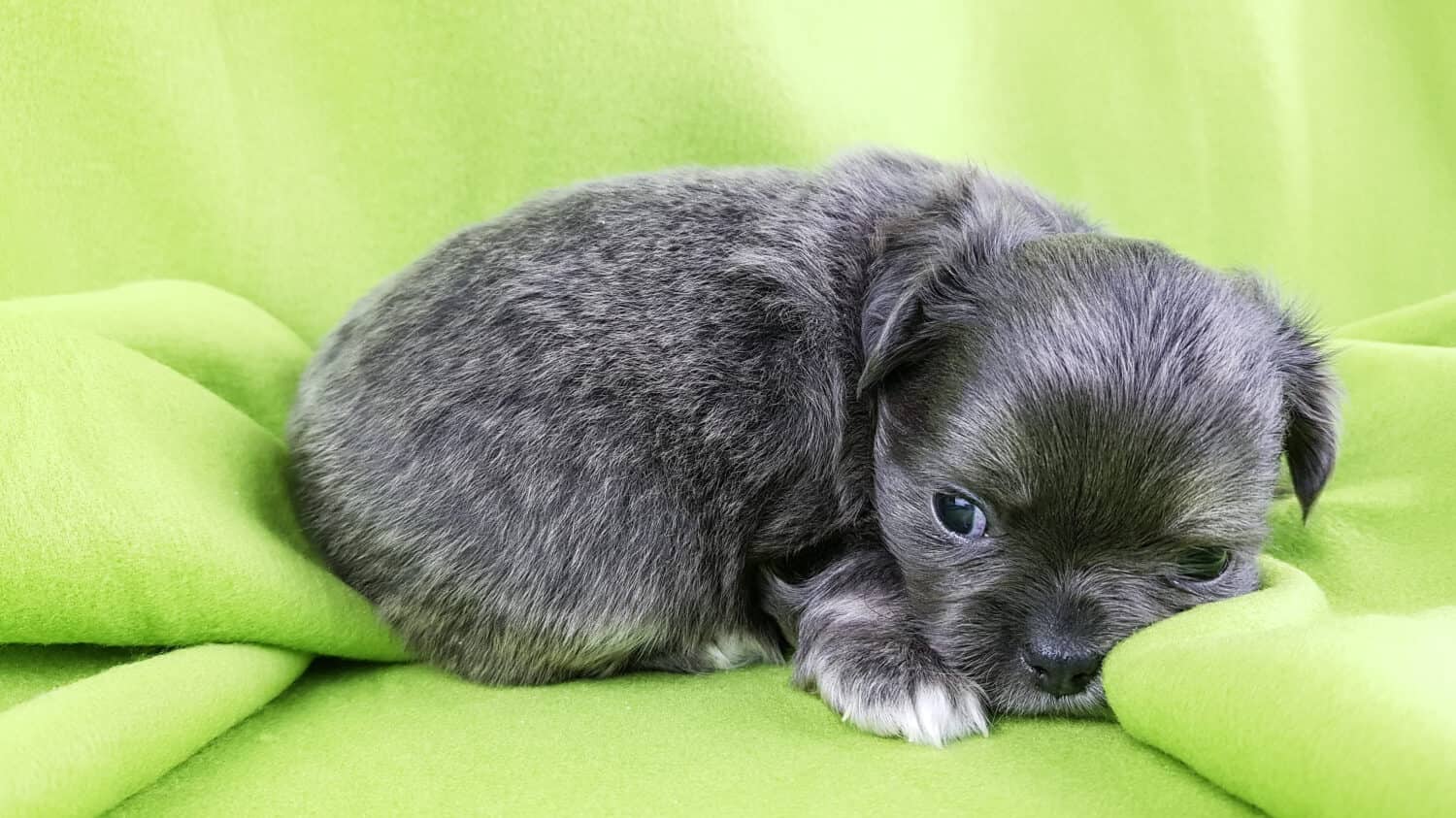
Shiny-coated silver Chihuahuas are pretty rare!
©Natalivideo/Shutterstock.com
Silver Chihuahuas have gray and white coats, which gives them a shimmery appearance. Since the genes required to breed a silver Chihuahua are recessive, they’re fairly rare to see.
They also look very similar to blue Chihuahuas.
#11: Silver and White
Silver and white Chihuahuas have “silver” (gray and white combined) patches of fur and pure white patches of fur.
#12: Blue Fawn
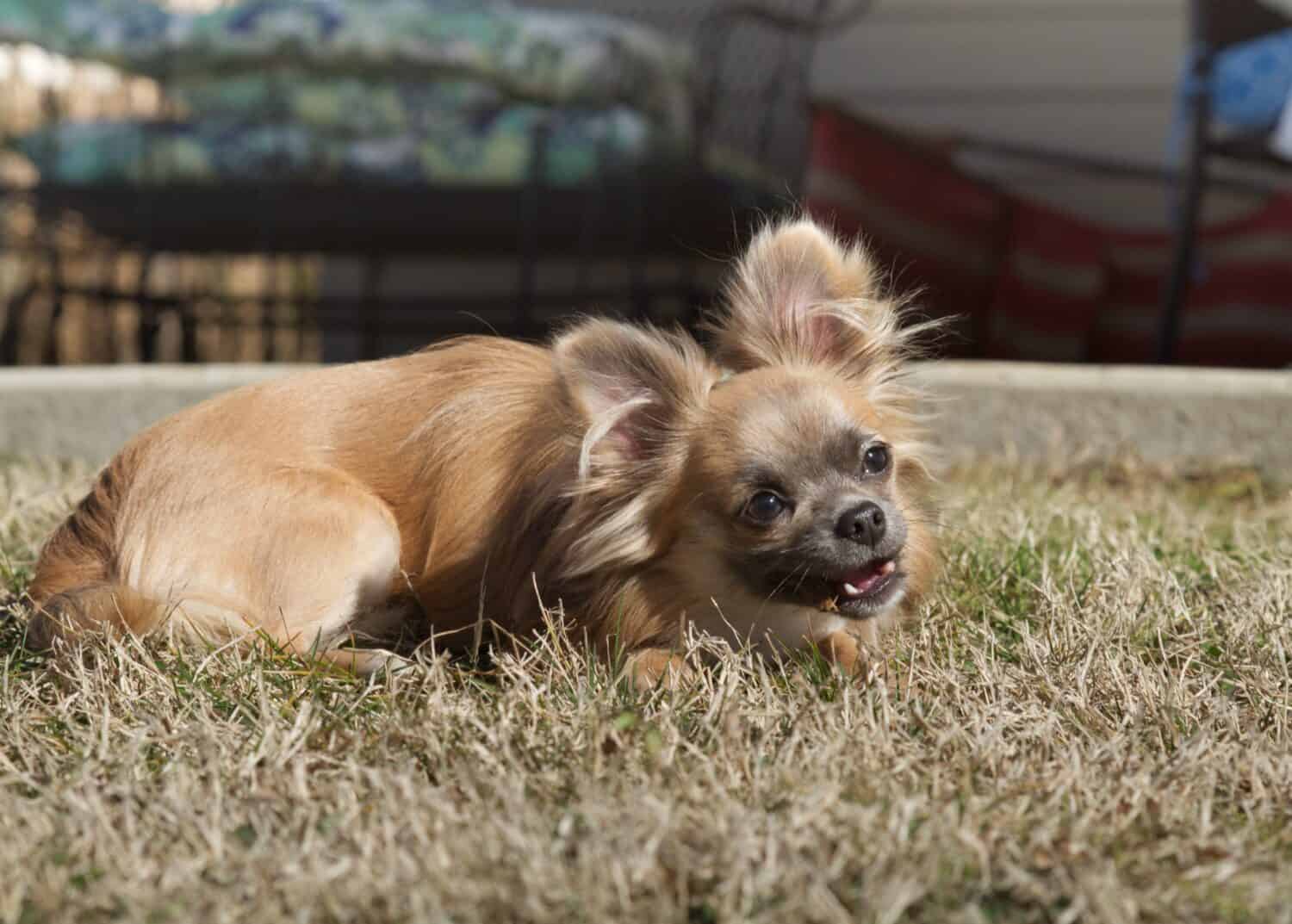
Blue fawn Chis have light fawn-colored coats.
©Angela Dow/Shutterstock.com
Chihuahuas with blue fawn coats have light tan or brown fur caused by recessive genes.
#13: Black and Red
Though black and red are both common in Chihuahuas, they’re a pretty rare combination! Black and red Chis, of course, have both black and red patches of fur.
#14: Black and White

Common colors on their own, black and white together are seen less often in Chihuahuas.
©Polina Eugenevna/Shutterstock.com
Black and white Chihuahuas are in the middle when it comes to rarity–not super rare, and not super common. They may not be the first that comes to mind when you think of Chihuahuas, but you may have seen one before!
#15: Black-Sable Fawn
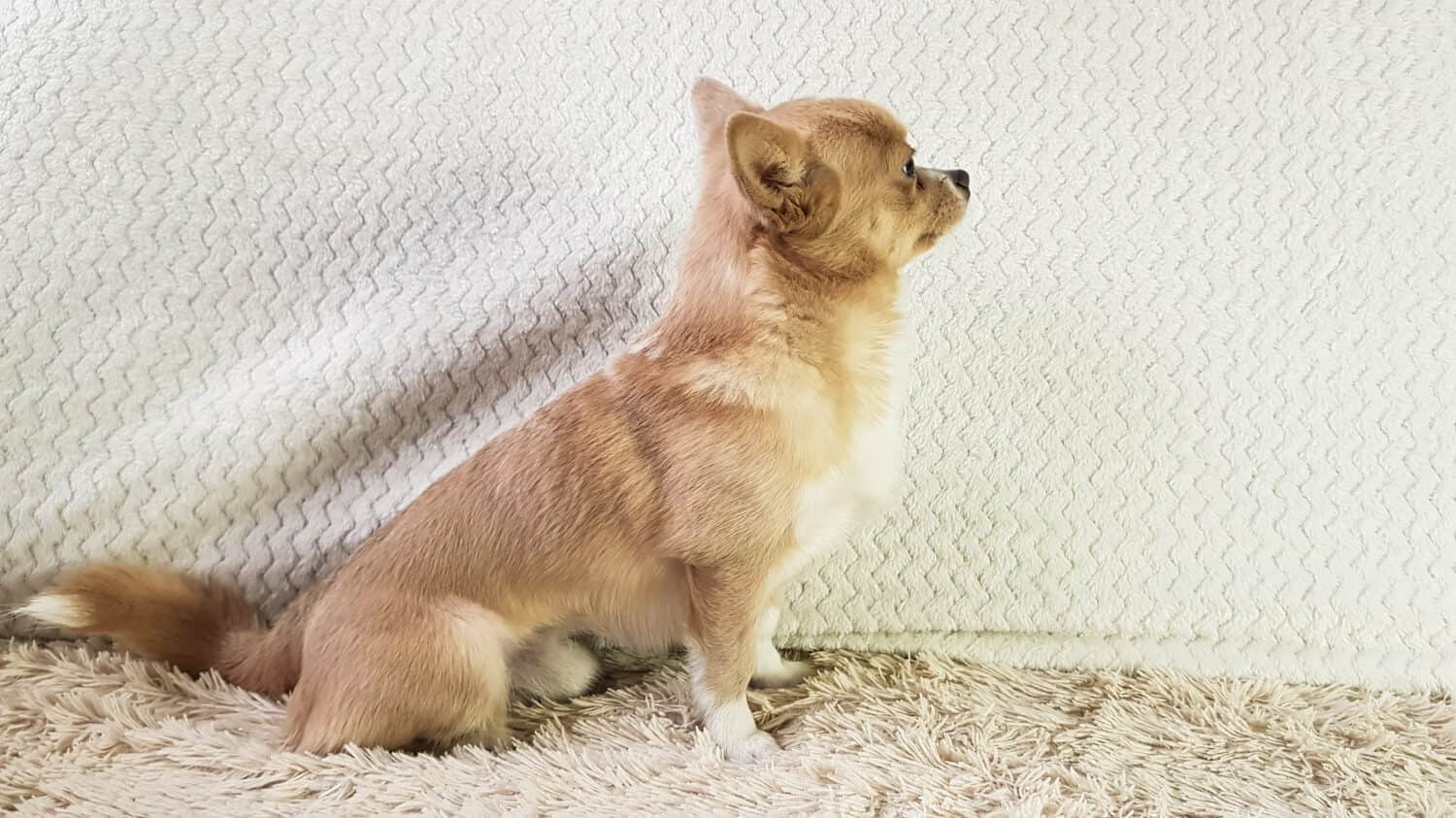
Sabled coats have kind of a “ticked” pattern.
©Natalivideo/Shutterstock.com
Sabled fur is light at the root and darker at the tip. Therefore, black-sable fawn Chihuahuas have fur with fawn roots and black tips.
#16: Black-Sable Silver
Similarly, black-sable silver Chis have silver roots and black tips, making a gradient pattern on each strand of fur.
#17: Blue and White
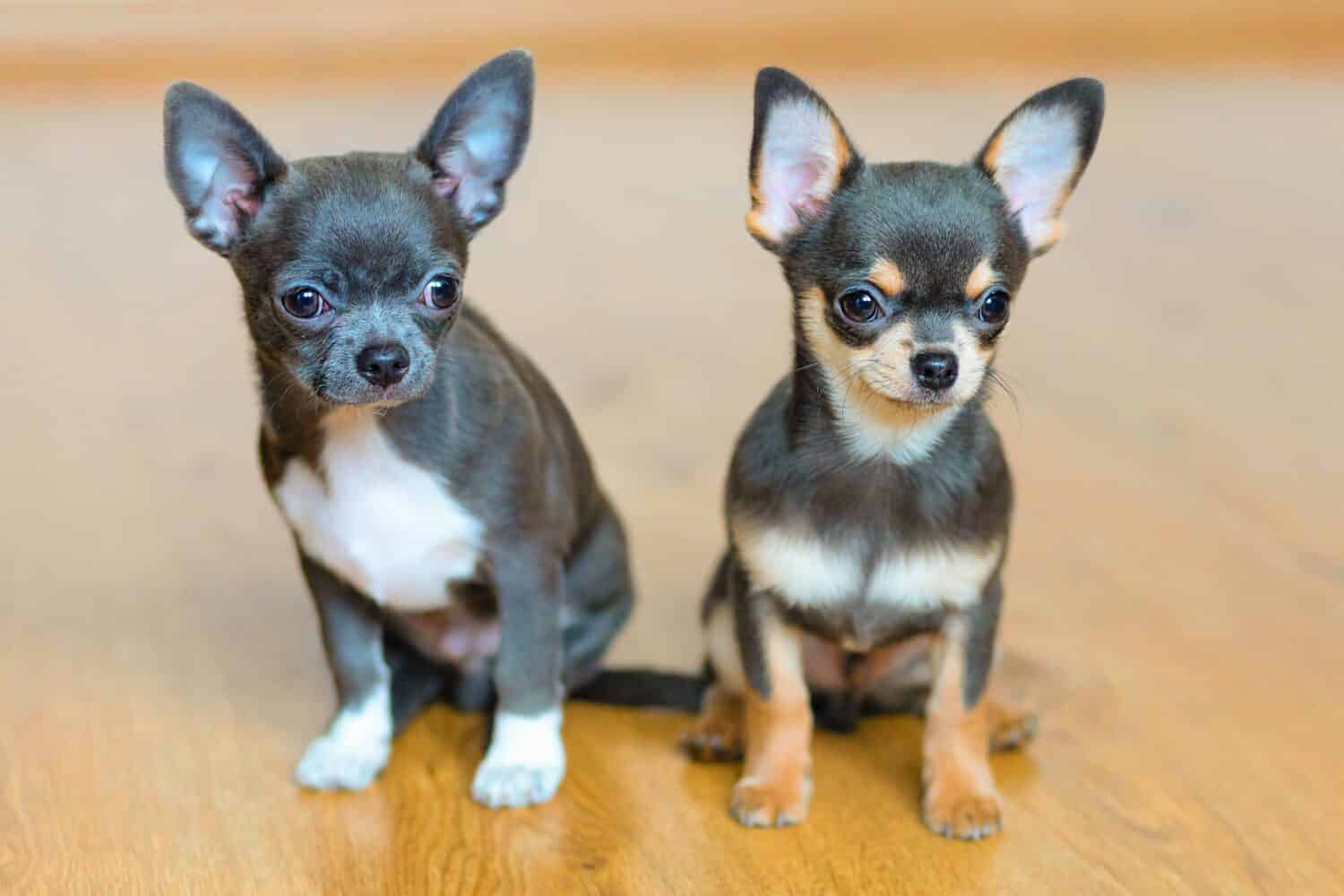
Blue Chis with white markings are very common.
©ElenaYakimova/Shutterstock.com
Blue and white Chihuahuas are pretty common, but the blue gene is caused by recessive genes–so it isn’t as common as some other colors.
#18: Chocolate and White

These pups may also have a few tan markings.
©otsphoto/Shutterstock.com
The same goes for chocolate and white Chihuahuas, though they’re even more common to see. These Chis have brown and white coats.
#19: Chocolate-Sable Fawn
These pups have fawn (or tan) coat roots with chocolate (or brown) tips.
#20: Cream and White
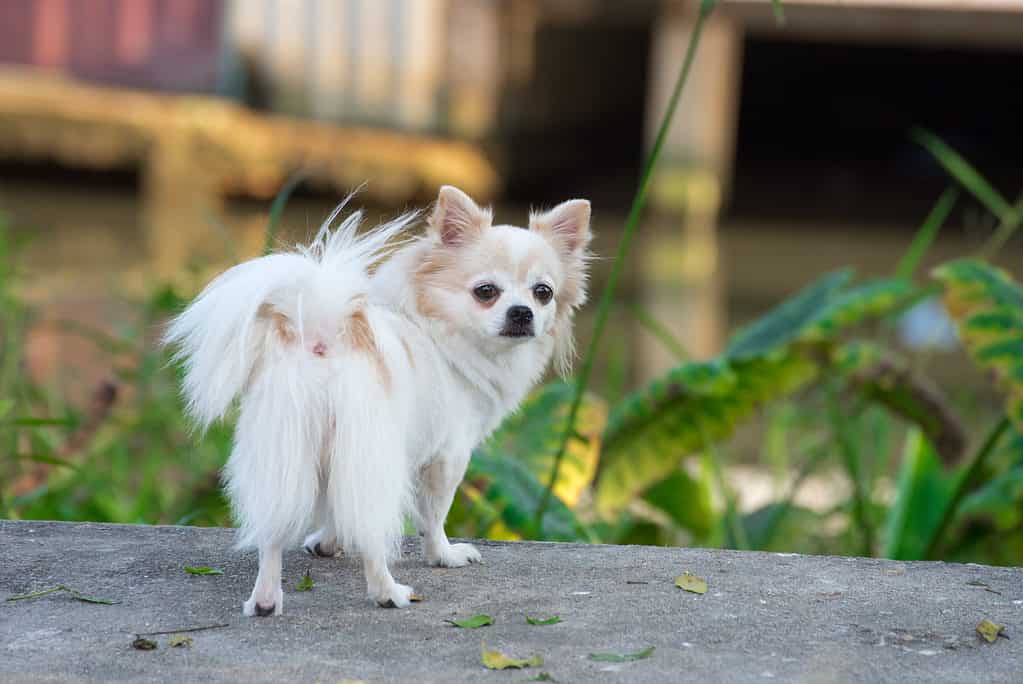
The color cream is much lighter than the color fawn.
©MODMOD/Shutterstock.com
Cream and white Chihuahuas have light, creamy tan coats with patches of white (or vice versa). They’re pretty commonly seen.
#21: Gold
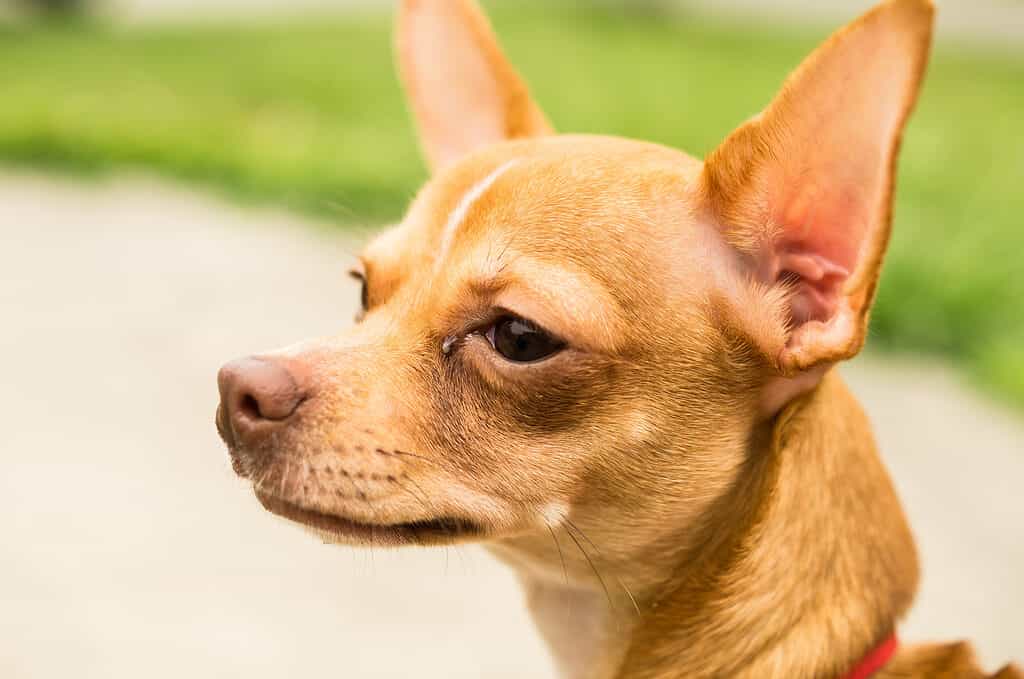
Fawn and gold coats are very similar.
©Toro_The_Bull – Arturelia/Shutterstock.com
Gold coats are similar to fawn coats, but tend to look shinier in appearance, almost glimmery in sunlight.
#22: Gold and White
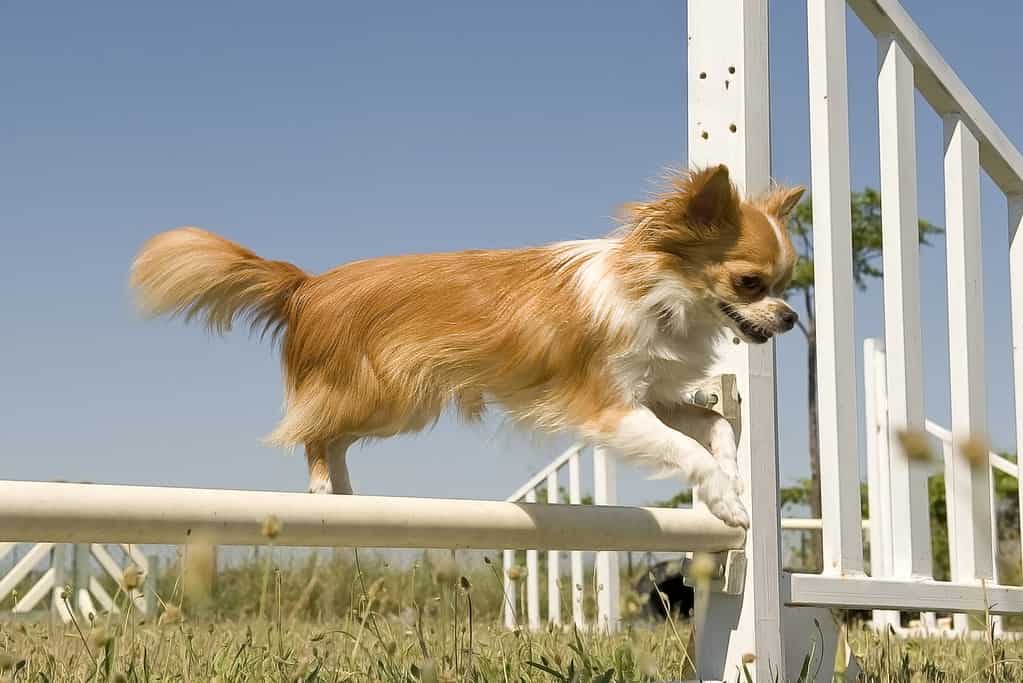
Some Chihuahuas with gold fur also have white markings.
©iStock.com/cynoclub
A gold and white Chi will have darker fur than cream and white, but look quite similar otherwise!
#23: Red and White

Orange-brown coats in dogs are called “red.”
©Lisa Chip/Shutterstock.com
In dogs, red is an orange-brown color. Therefore, red and white Chihuahuas are really orange and white. They’re a little darker in color than gold and white Chis.
#24: Black and Tan

It’s very common to see black and tan Chihuahuas.
©mil87olia/Shutterstock.com
Now we’re getting into some coat colors you’ve almost definitely seen! Black and tan Chihuahuas are typically black with tan markings above the eyes and on the muzzle, chest, and legs.
#25: Blue and Tan
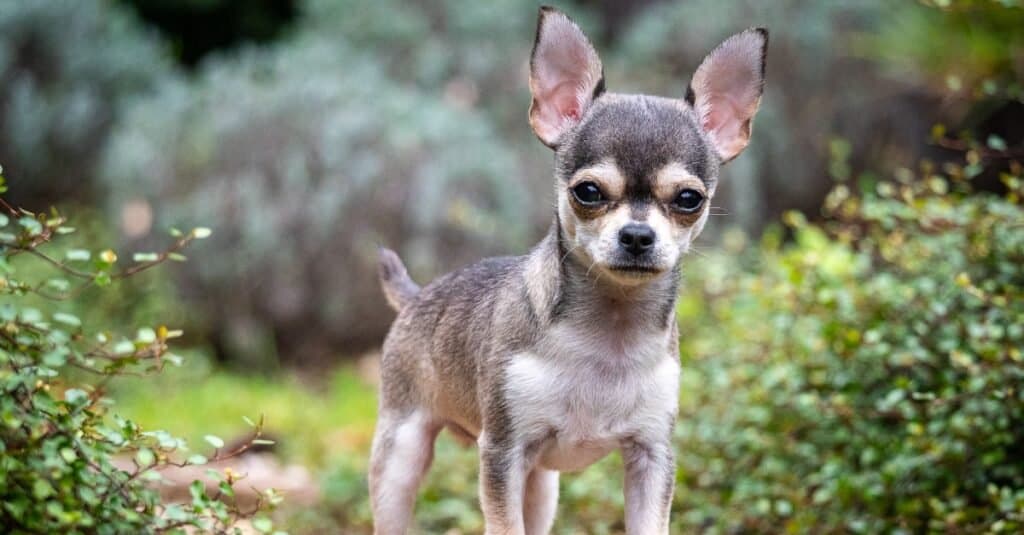
Chihuahuas are the cheapest dog breed because of how affordable it is to take care of them.
©iStock.com/Aime Martin
Blue and tan Chis look similar to black and tan pups but with gray fur instead of black.
#26: Chocolate
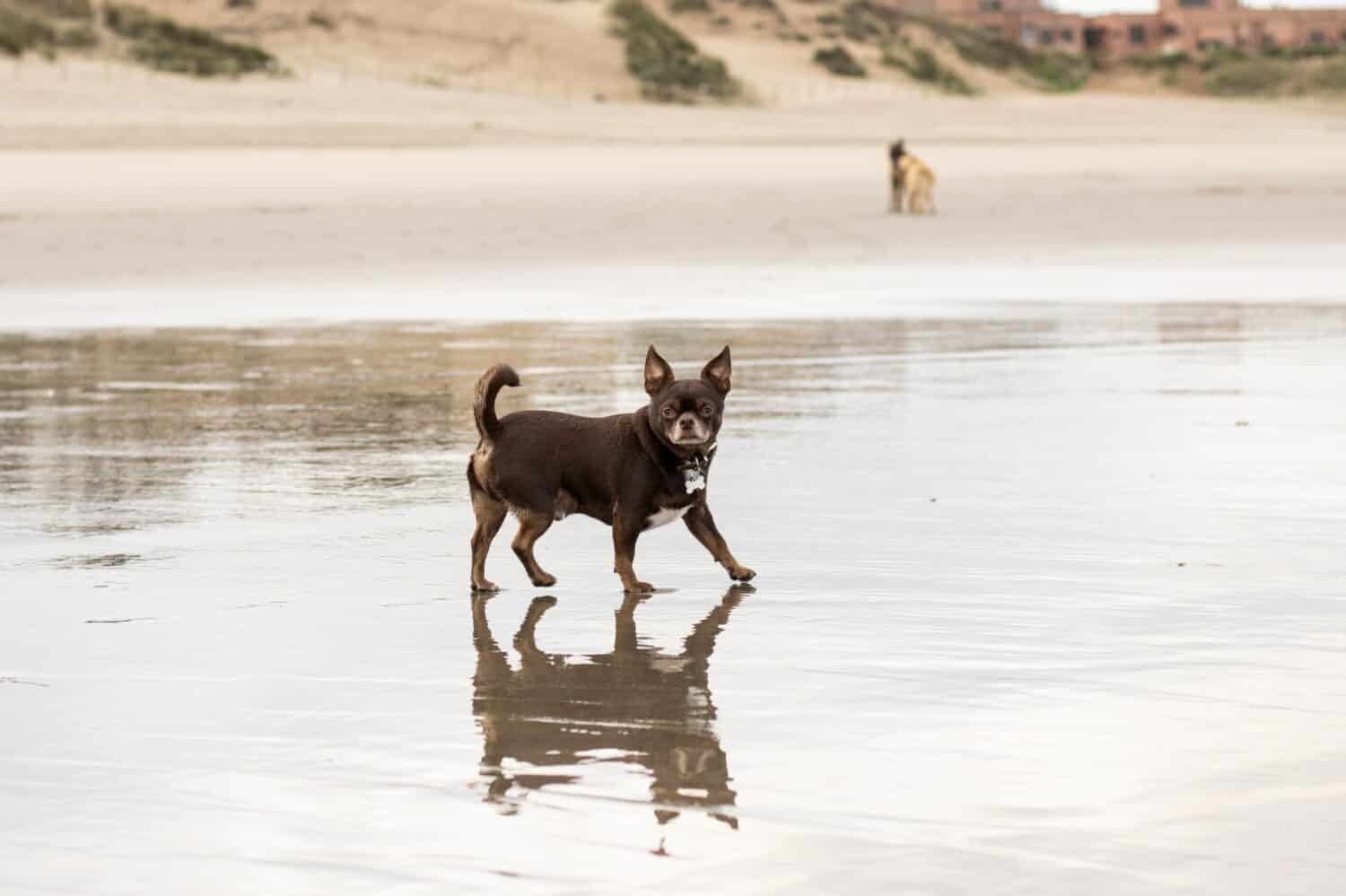
With or without markings, chocolate Chihuahuas are those with dark brown coats.
©Patri Sierra/Shutterstock.com
Chocolate Chihuahuas have rich brown coats, potentially with some fawn or other markings.
#27: Chocolate and Tan
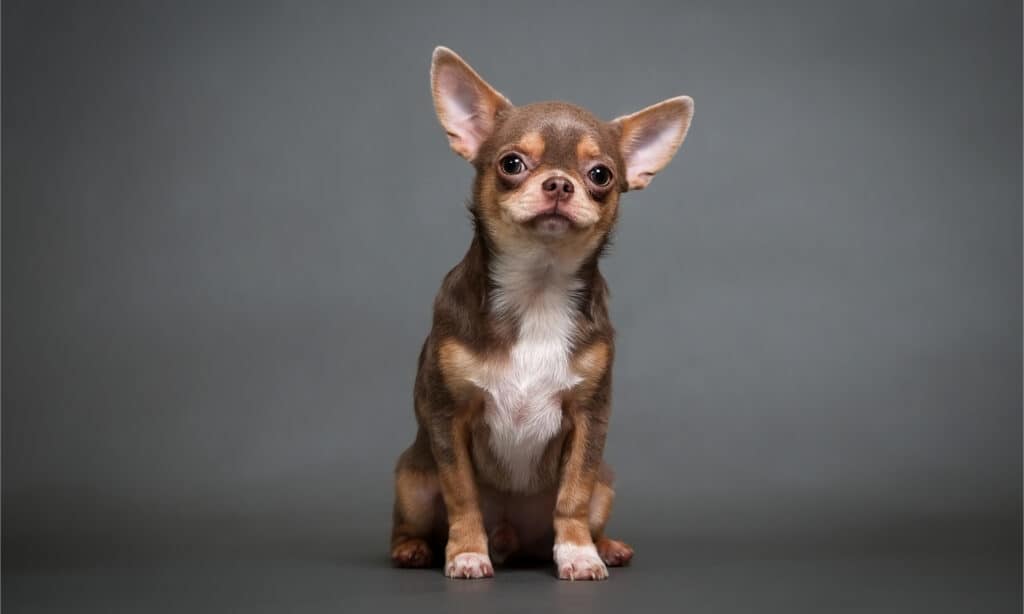
Brown and tan Chihuahuas tend to have similar markings to one another.
©Al_Er/Shutterstock.com
Chocolate and tan Chis again have the same markings as black and tan Chihuahuas but with a brown base coat instead of black.
#28: Fawn and White
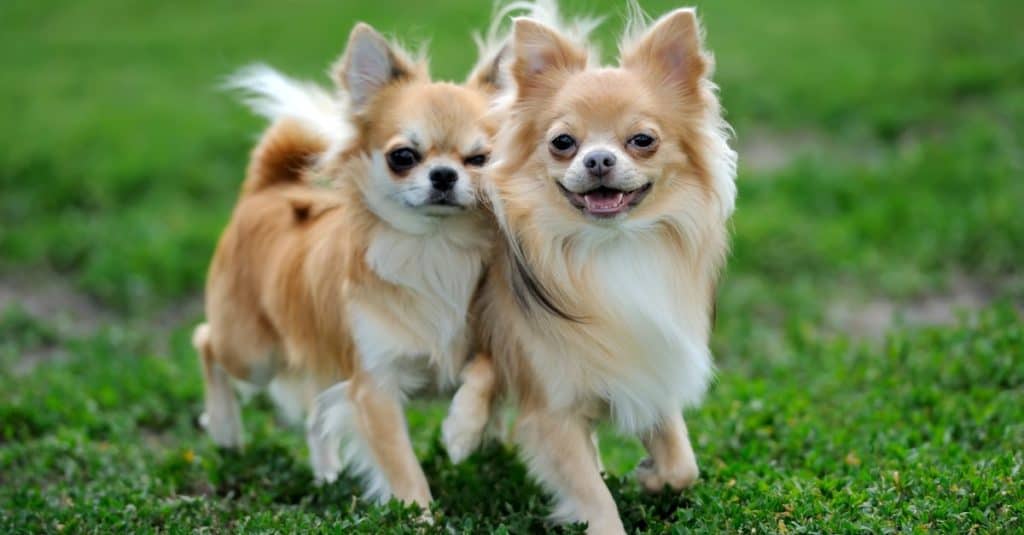
One of the most common Chihuahua coat colors is fawn and white.
©Volodymyr Burdiak/Shutterstock.com
Fawn and white Chihuahuas have light tan and white fur. They’re very common.
#29: Cream
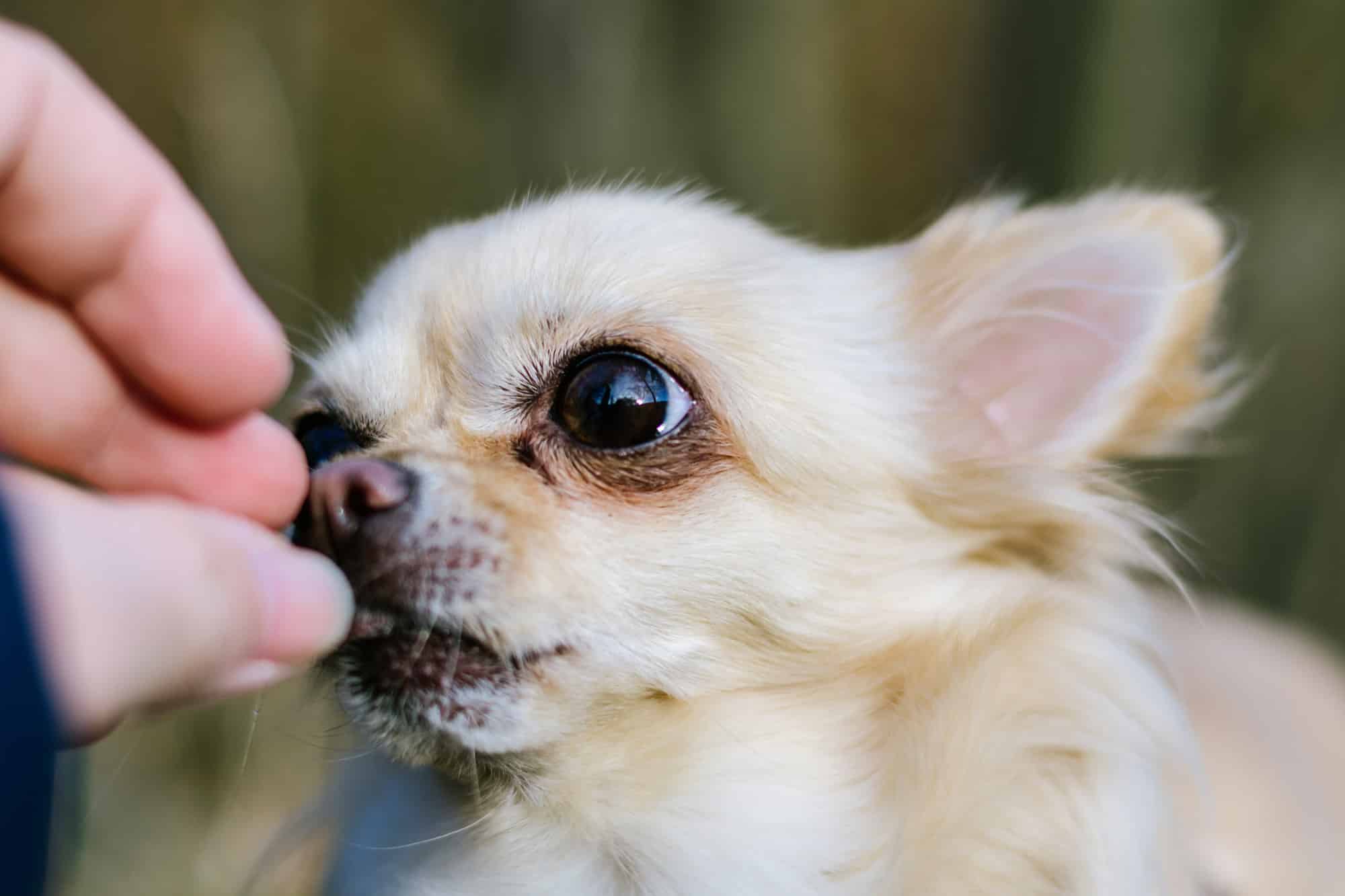
Another very common Chihuahua color is cream.
©iStock.com/Jan Rozehnal
Cream Chihuahuas have light cream-colored fur with few or no markings.
#30: Fawn
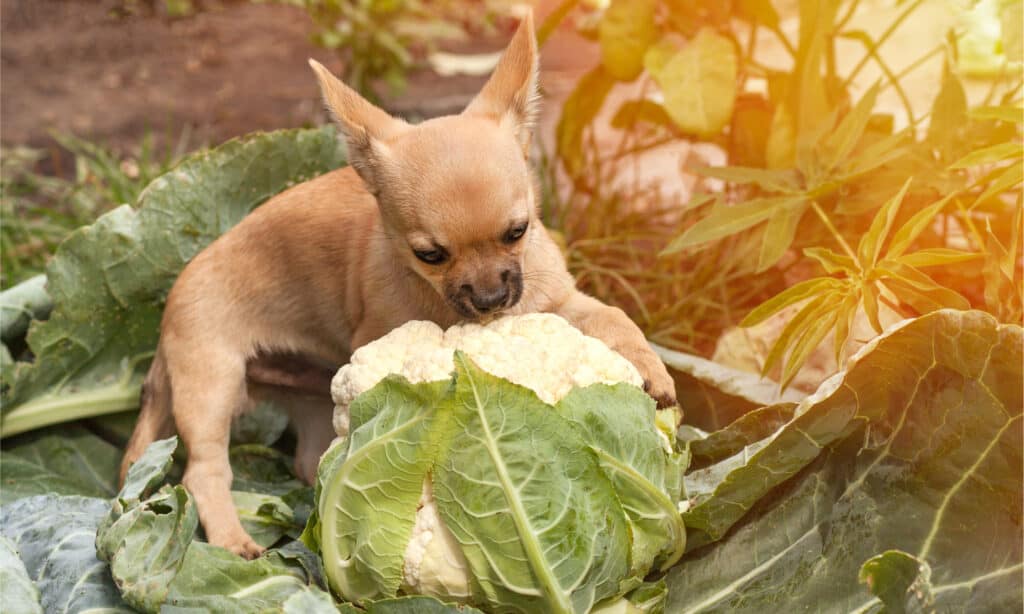
Almost everyone has seen a fawn Chihuahua, they’re so common.
©victoriyasmail/Shutterstock.com
When it comes to fawn vs cream Chihuahuas, fawn pups are a little darker in color! They’re a medium-dark tan.
#31: Red
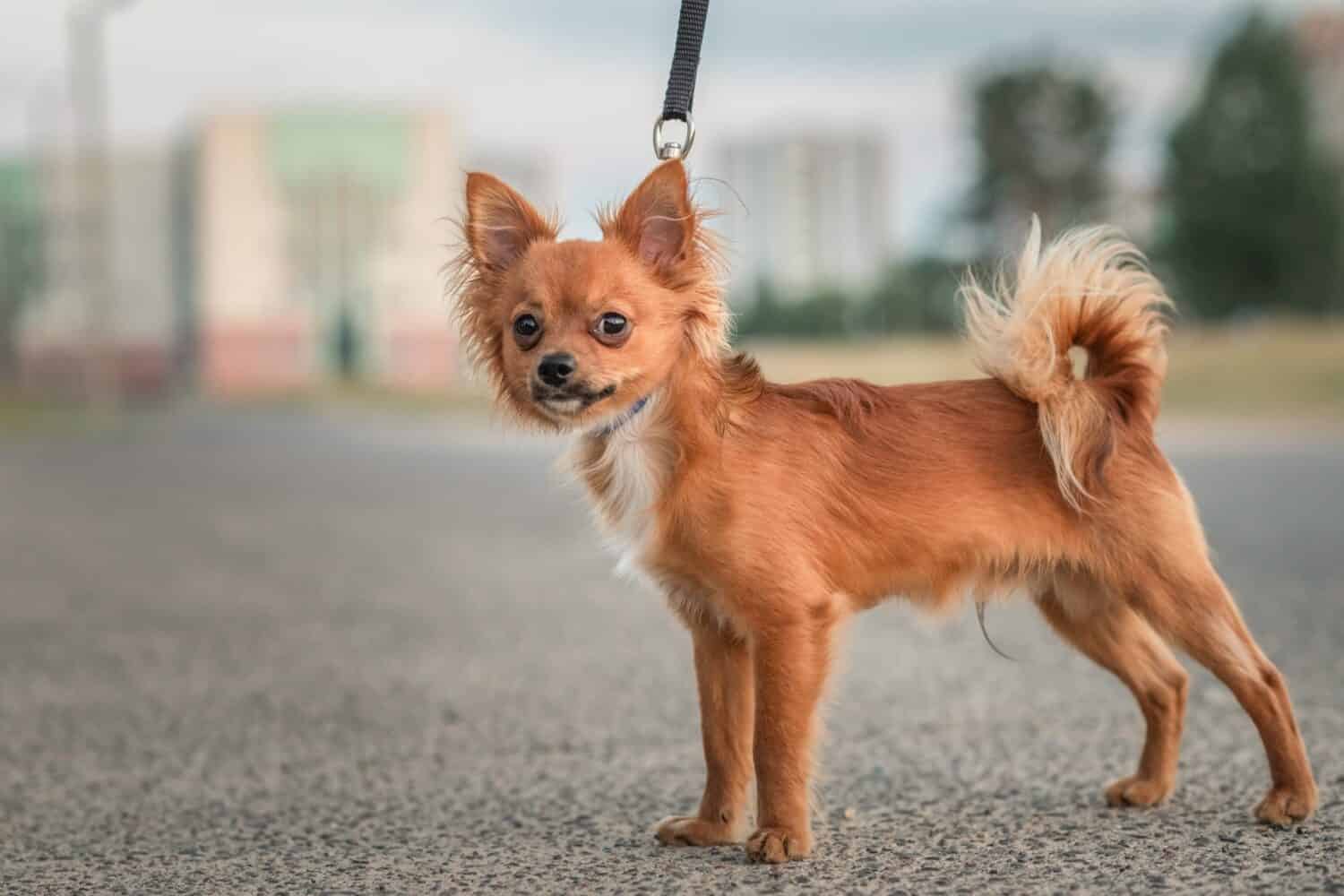
Orange Chis are typically referred to as “red.”
©shymar27/Shutterstock.com
Red Chihuahuas have medium to dark orange coats, potentially with a few patches of another color such as white.
Is Breeding for Rare Coat Colors Ethical?
Before adopting a puppy from a breeder, it’s vital to ensure they’re breeding ethically. Unfortunately, there are quite a few issues in regard to breeding for rare Chihuahua coat colors.
Many breeders do this only for the money, or to create “cuter” puppies–without regard to their dogs’ health. Sometimes rare coat colors are rare for a reason, and it’s due to the added health risks associated with the coat.
It’s also important to note that Chihuahuas as a breed aren’t ethically bred, as they have brachycephalic (short) snouts, which leads to a host of health issues within the breed. So, it’s best to adopt from a rescue rather than an unethical breeder.
I hope this article has helped you, whether you’re thinking of adopting a Chihuahua or just wanted to see cute puppy photos!
Remember to always adopt or shop responsibly, and make sure your lifestyle allows you to provide all of the care your future pup will need throughout their lives.
Thank you for reading! If you have feedback on this post, please contact the AZ Animals editorial team.
Ready to discover the top 10 cutest dog breeds in the entire world?
How about the fastest dogs, the largest dogs and those that are -- quite frankly -- just the kindest dogs on the planet? Each day, AZ Animals sends out lists just like this to our thousands of email subscribers. And the best part? It's FREE. Join today by entering your email below.
Thank you for reading! Have some feedback for us? Contact the AZ Animals editorial team.







